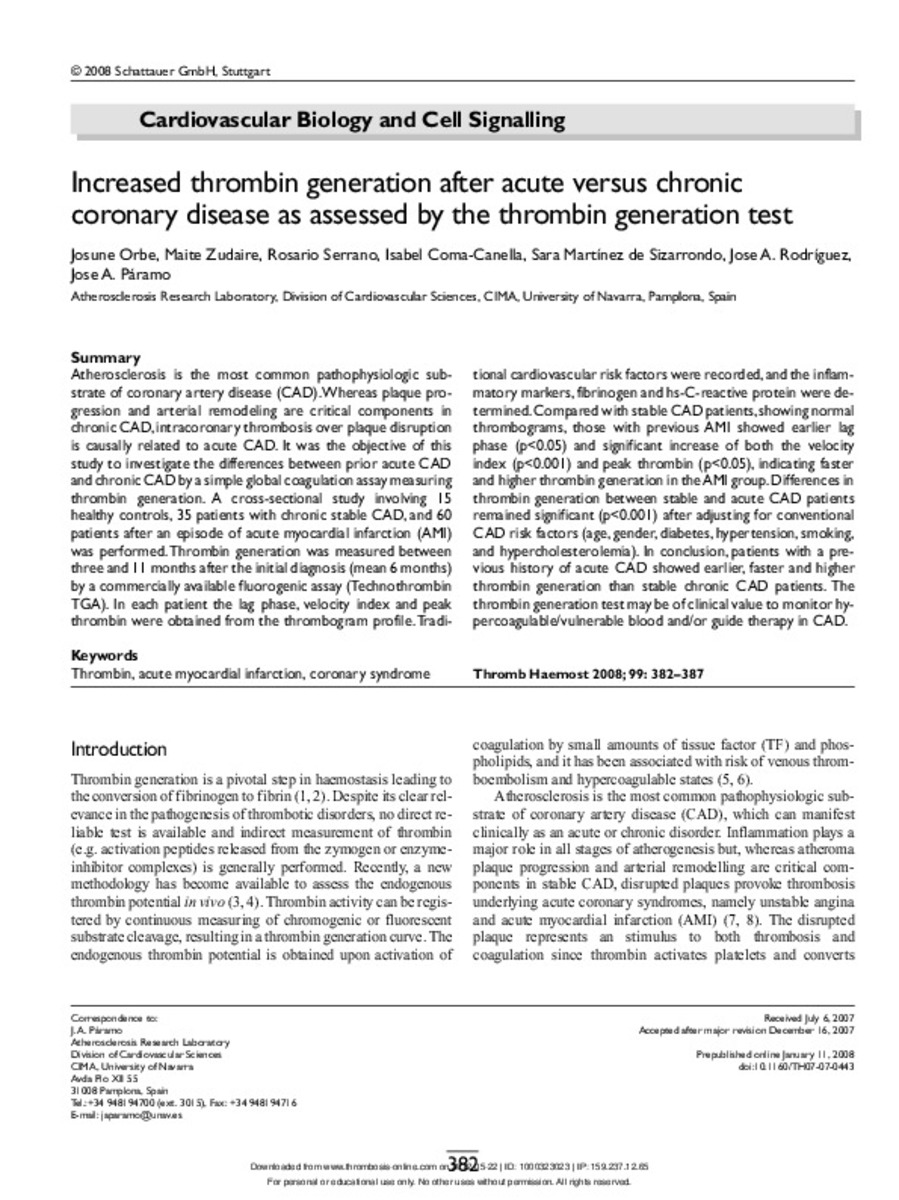Increased thrombin generation after acute versus chronic coronary disease as assessed by the thrombin generation test
Keywords:
Thrombin
Acute myocardial infarction
Coronary syndrome
Citation:
Orbe J, Zudaire M, Serrano R, Coma-Canella I, Martinez de Sizarrondo S, Rodriguez JA, et al. Increased thrombin generation after acute versus chronic coronary disease as assessed by the thrombin generation test. Thromb Haemost 2008 Feb;99(2):382-387.
Statistics and impact
0 citas en

0 citas en

Items in Dadun are protected by copyright, with all rights reserved, unless otherwise indicated.







